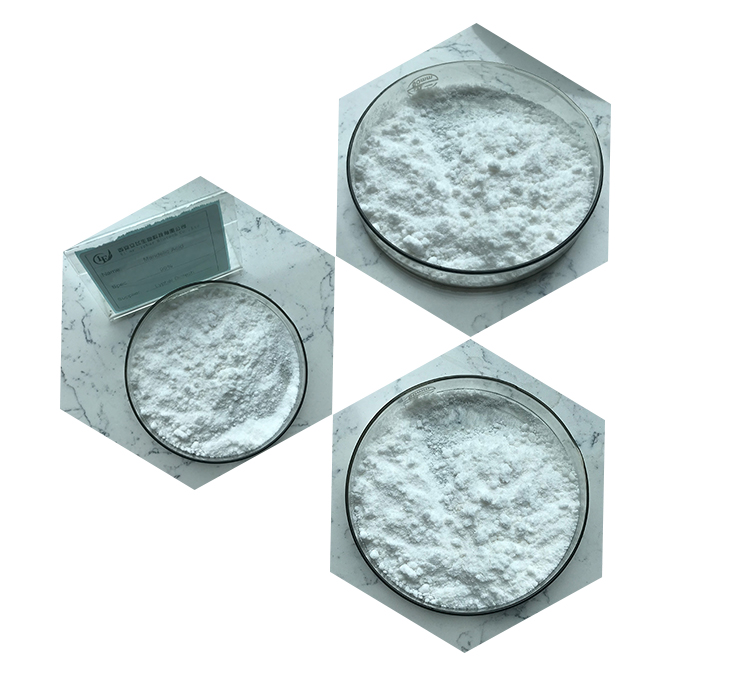Mandelic acid is an aromatic α-hydroxy acid with the molecular formula C₈H₈O₃. It has applications in cosmetics, pharmaceuticals, and as a chiral building block in organic synthesis. Here’s an overview of its synthesis and resolution.
Synthesis of Mandelic Acid
1.From Benzaldehyde and Glycolic Acid:
- Starting materials: Benzaldehyde and glycolic acid.
- Reaction: Benzaldehyde reacts with glycolic acid in the presence of a catalyst (often an acid catalyst) to form mandelic acid through a condensation reaction.
- Mechanism: The reaction involves the nucleophilic addition of the glycolic acid to the carbonyl carbon of benzaldehyde, followed by dehydration to form mandelic acid.

2.From the Hydrolysis of Benzyl Cyanide:
- Starting materials: Benzyl cyanide.
- Reaction: Benzyl cyanide undergoes hydrolysis to yield mandelic acid.
- Conditions: This can be carried out under acidic or basic conditions.
3.Enzymatic Synthesis:
- Enzymes: Specific enzymes can be used to catalyze the conversion of precursors to mandelic acid, providing high selectivity for enantiomers.
Resolution of Mandelic Acid
Mandelic acid exists in two enantiomeric forms: (R)-mandelic acid and (S)-mandelic acid. To obtain a pure enantiomer, several resolution methods can be employed:
1.Crystallization:
- If a racemic mixture of mandelic acid is formed, it can often be separated into its enantiomers through selective crystallization, where one enantiomer crystallizes out preferentially due to different solubility properties.
2.Formation of Diastereomers:
- Mandelic acid can be reacted with a chiral reagent to form diastereomers. The diastereomers have different physical properties (e.g., solubility, melting points), allowing for separation by conventional means like fractional crystallization or chromatography.

3.Chiral Chromatography:
- High-performance liquid chromatography (HPLC) using chiral stationary phases can also be employed to separate enantiomers based on their differing interactions with the chiral stationary phase.
Applications of Mandelic Acid
Mandelic acid is used in skin care products due to its exfoliating and antibacterial properties. It also has applications in pharmaceuticals and can serve as a precursor for the synthesis of other compounds.
If you need more specific details about any of these processes or applications, let me know!
